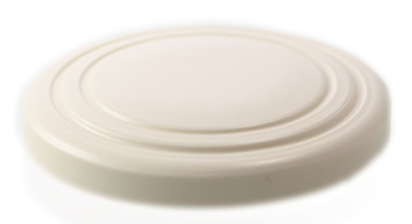Vitamin D is an fat soluable steroid hormone. It is formed when your skin is expose to UV-B radiation from the sun or a safe tanning bed. When UV-B strikes your skin surface, your skin converts a cholesterol derative into vitamin D3.
How much is enough? Here's a chart from Dr. Mercola:

The only accurate method to measure your serum vitamin D level is 25(OH)D, also called 25-hydroxyvitamin D. It is a better marker of the overall D status, and is most strongly associated with overall health. Do not use the 1,25(OH)D test (exception noted below).
Based on the latest research, adults need to take about 8,000 IU's of vitamin D3/day to reach levels of 40 ng/ml.
There are two types of vitamin D supplements. The one you want to take is vitamin D3 (cholecalciferol), which comes from fish oil. The other type, Vitamin D2 (ergocalciferol) is plant based and made active by irradiation, and is less biologically active. And stay away from synthetic D2 as it has been shown to be toxic at higher dosages.
Main food sources of vitamin D3 are eggs, organ meats, animal fat, cod liver oil, and fish.
Fair skinned individuals need far less sun exposure to receive their dose of sun to produce vitamin D as compared to dark skinned individuals. This is because lighter skin allows for greater penetration of UV-B leading to higher levels of vitamin D. Elderly individuals have limited capacity in their skin to produce vitamin D. This is because an enzyme in their skin decreases with degenerative againg.
Most recent research recommends:
| Age | Dose |
| Below 5 | 35 IU per pound per day |
| 5-10 | 2500 IU |
| Adults | 5000 IU |
| Pregnant | 5000 IU |
Please be aware that Vitamin D requirements are highly individual, as your vitamin D status is dependent on numerous factors such as skin color, location, and available sunshine.
Also, UV exposure beyond the minimal dose required to produce skin redness, does not increase your vitamin D production any further. But when properly practiced, regular sun exposure not only reduces skin cancer, but also 16 other common forms of cancer.
An equilibrium occurs in white skin within 20 min of UV exposure, at which point further increases in vitamind D is not possible, because the UV light will acutually start to degarde the vitamin D. It can take 3-6 times longer for darker pigmented skin to reach the equilibrium concentration of skin pre-vitamin D.
It is not sufficient to occasionally expose your face and hands to sunlight. It will not provide exposure for vitamin D production. This exposure can provide 200-400 IU during the months when appropriate sunlight is availble. But for most of us, this is an absoultely inadequate exposure to reach the healthy range of 50-70 ng/ml.
Too much sun will cause sunburn and has no health benefits. In fact, sunburn has been clearly linked to an increased risk of skin cancer. It is also largely related to the over-abundance of omega-6 oils consumed in the U.S. When sunlight hits these fats it can convert them to cancer-causing molecules. However, this cancerous transformation doesn't occur with omega-3 fats. So by changing the ration of omega-3 to omega-6 oils in your diet, you can prevent skin cancer. The best source of omega-e fat is krill oil. The antioxidant astaxanthin also appears to offer protection against the harmful sun exposure by acting as an internal sunscreen.
Caution: People who has sarcoidosis, tuberculosis, or lymphoma should avoid vitamin D supplementation until tested using the 1,24(OH)D test, as it is a better indicator these health challenges are present.
Sources & References:
http://articles.mercola.com/sites/articles/archive/2002/02/23/vitamin-d-deficiency-part-one.aspx











